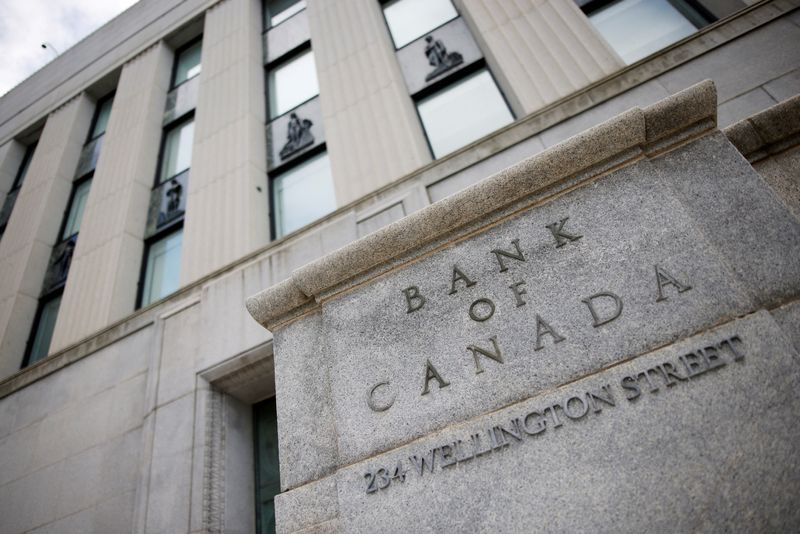By Promit Mukherjee
OTTAWA (Reuters) – The Bank of Canada is likely to cut its key policy rate by 50 basis points on Wednesday, as a slew of recent data on inflation, growth and unemployment calls for faster relief for consumers and businesses, economists said.
This will be the central bank’s first super-sized cut in over 15 years outside of the pandemic and its fourth rate reduction in a row, closely following the U.S. Federal Reserve, which slashed rates by a similar size last month.
“Those three big components – real GDP, the labor market and inflation – are very much in line with a weaker outlook than the Bank of Canada had anticipated,” said Randall Bartlett, senior director of Canadian economics at Desjardins.
Consumer prices in Canada slowed to 1.6% last month, below the 2% mid-point of the BoC’s 1% to 3% target range. GDP expanded at just a 0.2% rate in July, and an advance estimate indicated that growth likely stalled in August.
Wage inflation, which has been a sore point in the BoC’s fight against inflation, has also shown signs of consistent cooling. However, robust job numbers last month have some economists divided on the rate path ahead.
The current benchmark rate is 4.25% after the central bank reduced borrowing costs by a cumulative 75 basis points from June.
The BoC will announce its monetary policy decision at 9:45 a.m. ET (1345 GMT).
It will also release its last quarterly Monetary Policy Report for the year, which will include fresh forecasts for economic growth and inflation for the year and next two years.
Economists expect a broad set of revisions to inflation, growth and consumption numbers. They are also keen to watch the bank’s commentary on population growth in the coming years.
In a Reuters poll, two-thirds of economists, 19 of 29, forecast that the BoC would cut rates by one-half percentage point to 3.75% on Oct 23 and currency swap markets are pricing in an almost 95% chance of a cut of 50 basis points.
“It’s a bit of a balancing act,” said Pedro Antunes, chief economist at Conference Board of Canada, an independent economic think tank.
Most financial firms are expecting a cut of 50 basis point and that could sway the BoC’s opinion, but just continuing the quarter-point trimming cycle is more prudent, he said.

